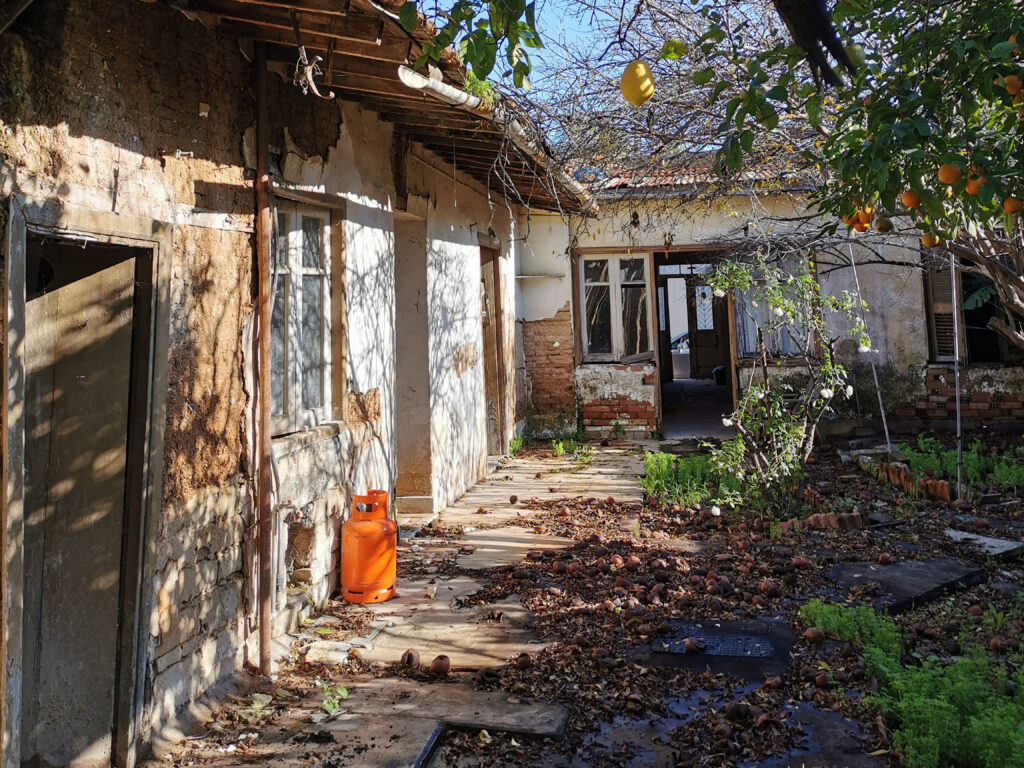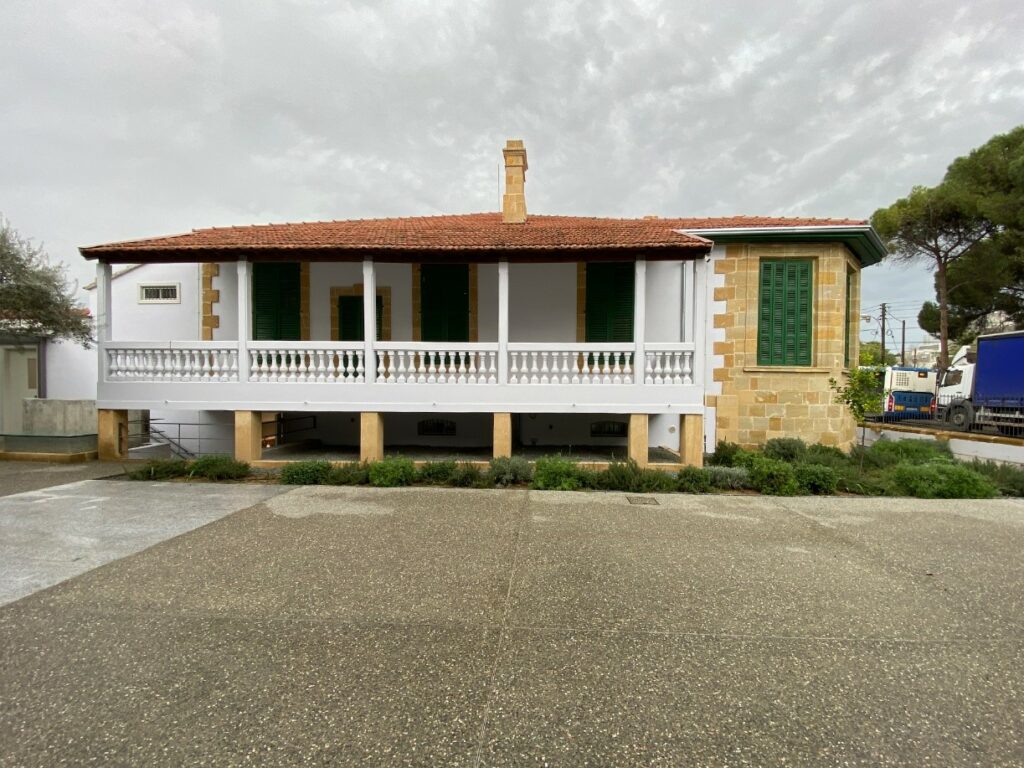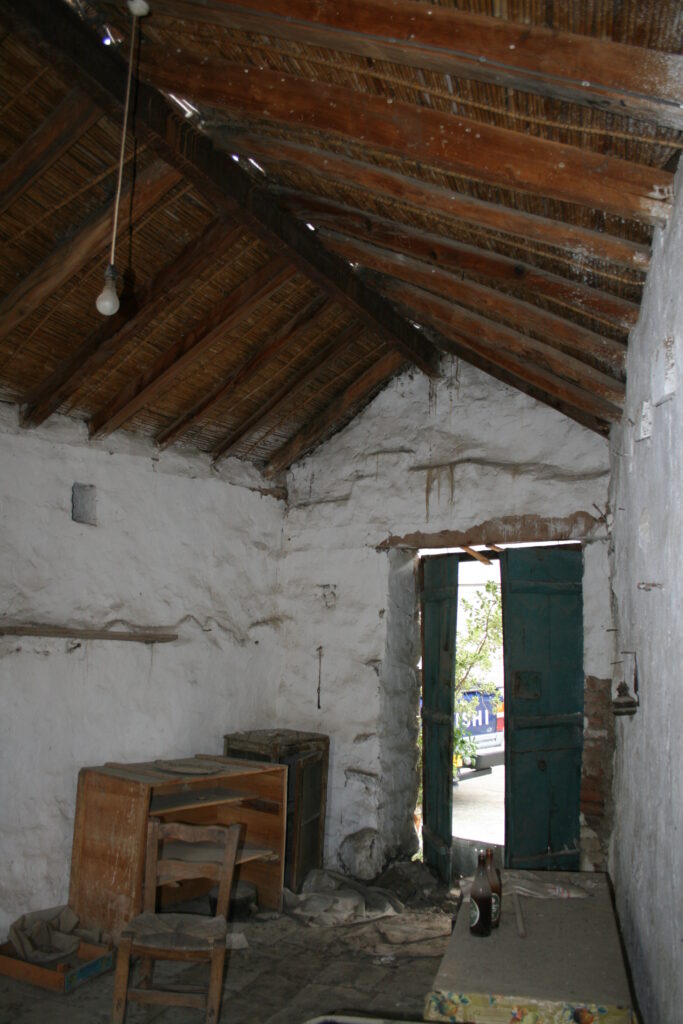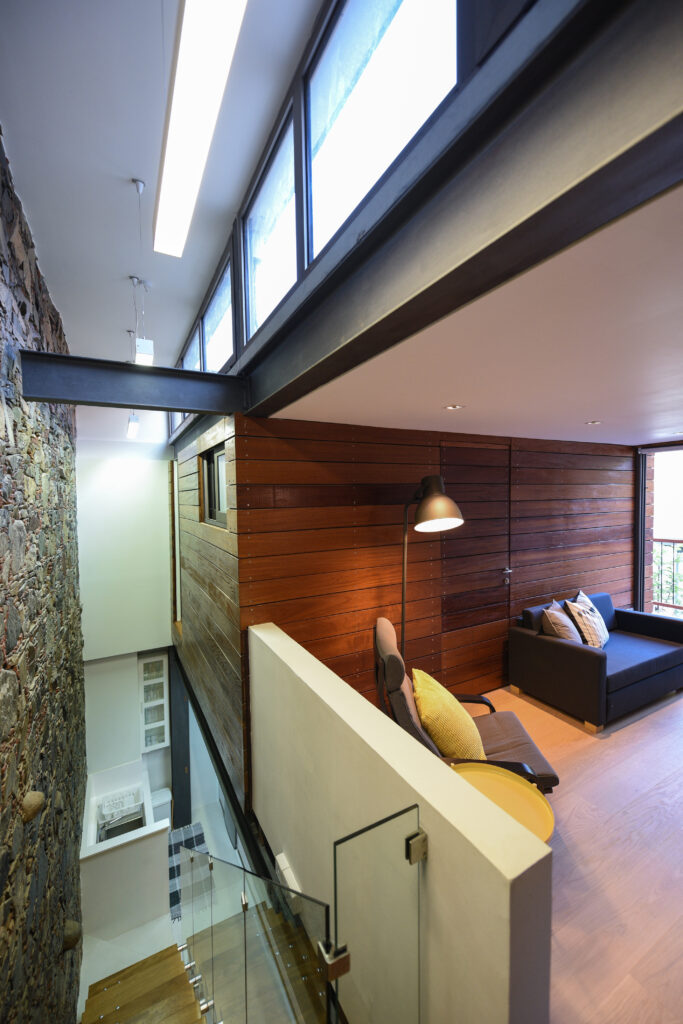Filenews 25 May 2025 - by ChrystallaHadjidimitriou
Remarkable buildings are collapsing or burning, and historical evidence is lost. Despite the interest that exists in the restoration of buildings, this is subject to lengthy procedures. The Minister of the Interior, Konstantinos Ioannou, partially admits the problem, attributing it to understaffing of the Department of Conservation, but assures that the state has a moral obligation to protect the historical heritage of the place.
-On the occasion of the demolition of a very remarkable house in Nicosia, a few months ago, the need to preserve historic and other remarkable buildings was raised again. Are there any thoughts on the part of the government?
-Indeed, the recent demolition of the house in question brought to the surface the debate about listed buildings. Remarkable buildings of the modern architectural creation of our country have been declared preserved in the past and the effort to protect the most emblematic buildings of the modern architecture of the place has intensified in recent years. In this context, the Department of Urban Planning sent an invitation in 2024 to the organized ensembles of the technical world and the academic community to identify and document the values (architectural, social, historical, etc.) of buildings of modern architectural creation, in order to evaluate them and include them in conservation decrees. Assisting in this effort is ETEK, whose members have been actively involved in the preparation of evaluation reports for important buildings of the country's modern architectural history. The process is underway and the first decrees are expected to be prepared soon.

-Several years ago, a plan to provide incentives for conservation was introduced, thanks to which many buildings were saved. Does the current government embrace the philosophy of conservation or does it consider it unprofitable and unnecessary?
-The preservation of cultural heritage, apart from being legal, is primarily a moral obligation of the State, and this is proven by the legislation and heritage protection conventions adopted by the Republic of Cyprus, but also by the importance that we as a State attribute to the architectural heritage of our country. In no case does the Government, and in particular the Ministry of the Interior, consider the work done to preserve it unnecessary. On the contrary, it embraces the philosophy of conservation, which is why it has institutionalized and continues to implement an Incentive Plan, in order to protect this heritage and pass it on to future generations.
-The conservation sector seems to have been affected by the reform of local government since workload was transferred to Urban Planning. How is it treated?
-Indeed, with the reform of Local Government, the Conservation Branch undertook an additional amount of work, among others, the applications for planning permits for listed buildings from the Municipalities and the applications for Consents from the Municipality of Nicosia, while it is an acceptable fact that more staffing is needed. In addition to the electronic licensing that will speed up the process of granting urban planning permits and consents in the first phase, an important step is also the envisaged procedure for the electronic processing of applications for declarations, grants and transports, as well as the promoted strengthening of the Conservation Sector with permanent and temporary staff to carry out the work.
-An important problem that is observed and acts as a disincentive is the time it takes for a restoration work to proceed: More than one year for the issuance of an urban planning plan and another 8-10 months for a Building Permit. Given the condition of the buildings (many are collapsing). How can the procedures be speeded up?
-In addition to the staffing issues of the Conservation Sector, a factor that contributes to the delays is the quality and completeness of the studies submitted, resulting in a multiplication of the study times of the applications, since the designers are required to submit amending or supplementary plans. By extension, it is considered that a more complete information and training of designers on conservation issues and in particular on interventions in listed buildings will improve the quality of the studies and reduce the time for the examination of applications.


-The same delay is observed in the approval and concession of funds, even those that will be given by private individuals for the purchase of rates. Owners who start restoration work are forced to interrupt waiting up to 1.5 years for the services to process the applications. In the meantime, they are paying loans, rents, market prices are diversified and all this discourages those who want to declare their building listed or buy a listed building. Do you have any measures to propose?
-The State must control the procedures for approving subsidies and in general the granting of incentives to owners of listed buildings. The solutions described above, i.e. the strengthening of the staffing of the Conservation Branch, but also the cooperation with ETEK to develop an educational program that is addressed to researchers, so that they are able to submit correctly and fully completed applications, will clearly contribute to the reduction of examination time and delays. Correspondingly, as mentioned above, electronic licensing is important in terms of accelerating procedures, as well as the electronic processing of applications for declarations, grants and transfers.
-Another issue is the uses. While many villages have been abandoned, small investors who want to make a small guesthouse, restaurant or something else, are running into strict adherence to uses. Shouldn't there be some flexibility to help revitalize communities?
-The issue of uses does not concern exclusively conservation, but is a matter of spatial planning policy that is examined by the Studies Branch of the Department of Urban Planning in collaboration with various bodies, so as not to affect the environment and especially the amenities of the residents of the areas.
Although it is understandable that the goal is conservation, there is an excessive focus on details. Isn't it time to modernize the approach in terms of functionality, materials and aesthetics, without sacrificing of course conservation?
-The Conservation Department accepts interventions and materials that do not alter the authenticity of the historic building. For this very reason, incentives are also provided in order to facilitate the use of the original, original building materials and to use construction techniques compatible with existing constructions. Modern materials and interventions that give the mark of our time are acceptable in additions, provided that the existing historical building is not overshadowed.
-In other countries what is important is the preservation of the shell. This may be excessive, but the insistence on detail is also excessive, which can even increase costs and discourage interested parties.
-In other countries, no financial incentives are provided for the overall maintenance of a listed building, nor is value attributed to the typology and the design of its interior. In our country, both the shell and the interior are equally important, since the morphology and the facades derive from the way the interiors are designed. The incentives granted concern the whole building and not its individual elements.
-One of the issues that is often raised is the installation of photovoltaics. On the one hand, we are talking about maintenance (recycling of the building, in essence) which is the most sustainable thing that can be done, and on the other hand, we do not allow the exploitation of solar energy. -It is a mistake to have the impression that the installation of photovoltaic systems is not allowed in listed buildings, since photovoltaic panels have been placed, under certain conditions, in auxiliary wings, courtyards, shelters, etc., with the only limitation being that they are not placed on the roof of the main building. And this again is examined on a case-by-case basis. However, the Conservation Branch's view is that the issue of installing photovoltaic systems in listed buildings in settlement cores should be solved collectively and not individually, with the creation of energy communities and photovoltaic parks, as is done in other European countries.


-Is there any data on how many buildings have been rescued so far?
-Of the approximately 7,500 buildings that have been declared as listed, more than 4,500 have been maintained with sponsorships from the Incentive Scheme for Owners of Listed Buildings of the Ministry of the Interior, while the examination continues for the rest or others that may arise.
• 25 buildings that have been rescued are presented in the Compositions that are currently in circulation with Fileleftheros. Some have been converted into elegant and functional residences, others into offices, schools, hotels, showing the potential of old abandoned buildings.
ETEK: Preservation is not a luxury, it is a debt
Despite the embellishment of the situation by the minister, the reality is different. The procedures for issuing permits and sponsoring incentives have become so time-consuming that interested parties abandon the effort, while architectural offices whose main work volume is the restoration of listed buildings have been dormant for months. In the meantime, the prices of materials change upwards while the buildings themselves, most of which are already in poor condition, collapse. "There is no alibi," says the president of ETEK Konstantinos Konstantis. Solutions will have to be found. Time is not endless for the listed buildings".
To this end, a letter was sent to the Minister of the Interior on May 5, in which the problems are recorded and some solutions are proposed. The letter was followed by a meeting, while six people were recently seconded to the Conservation Department.
In the letter, ETEK emphasizes that the utilization of the country's cultural heritage is not a luxury but a duty. "The current situation, he says, discourages owners from taking advantage of the generous financial incentives for restoration, while it also causes significant financial problems to architectural firms operating in this area. The process of evaluating and approving financial incentives, including the procedures for the sale of the free building coefficient, requires an excessively long period of time, in some cases reaching 18 months. This results in the suspension of work on the part of the owners, who often do not have the liquidity to proceed."
It proposes, among other things, a more functional and sustainable licensing system, strengthening the Conservation Department with the purchase of services, the employment of experienced executives who have retired, the transfer of personnel from the Nicosia EDA, and the transfer of other services of the Department of Urban Planning.
It also proposes:
*Automatic issuance of a building permit for low-risk listed buildings if an urban planning permit has already been issued.
*Simplification of the sale of building coefficient by restoring the mechanism based on the published values of the Land Registry in order to avoid individual valuation on a case-by-case basis.
*Transparency and depiction of the situation, pending and new applications per year in order to assess the size of the problem.
*Flowchart to identify bottlenecks and delays.
*Arrangement of pre-arranged meetings between the designer and an officer within one month from the submission of the request in order to resolve any issues in a timely manner.
*Assignment of the measurement of the restoration costs to private surveyors with a random control by an IP in order to speed up the process and minimize the administrative burden.
*Abolition of the evaluation of bids when there is no substantive reason, taking into account the 1400 per sq.m.
